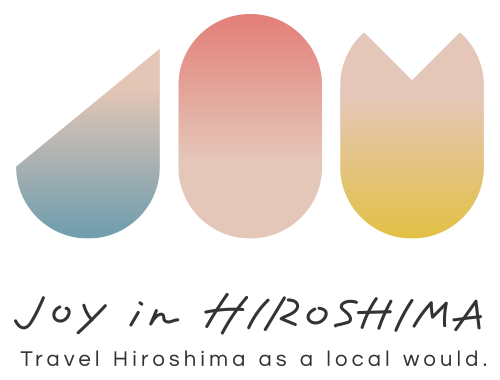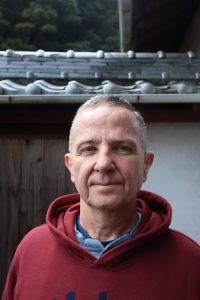100 Stories
Japanese Onsens (Hot Springs)- Facts and Etiquette
Bathing History
Public bathing culture has a long and varied history all around the world. With hot baths and hot springs taking on numerous etiquette rules with very specific details on how to bathe – of course all differ according to location and regions in many different countries around the world.
Although it is impossible to pinpoint the timeframe and location of the first public bath, data obtained by anthropologists unearthed one of the world’s oldest known possible hot bath locations in the Indus Valley region in what is now Pakistan around 2500 BC or around 4500 years ago. Other than its obvious function, it has been suggested that this early public bath may have been possibly connected to religious customs of the times, since bathing and cleanliness were likely closely attached to religious worship at the time. So public bathing and its accompanying rituals have clearly been around for a long time.
Actual detailed findings of areas using public bathing were first linked to Roman culture around 300 BC or so (or about 2300 years ago). All members of society (regardless of social status) used the baths, and it was considered a social gathering place for all to relax and discuss various topics of the day with each other. It was also gender specific with males and females using separate areas to bathe.
Bathing in public has since evolved and spread from Roman culture to other areas around the world with varying details in culture and etiquette – depending on the region and country to which it applies.
The formation of Turkish baths likely were a development of the Byzantine Empire connected to Roman rule in the 7th century AD, and were connected to social norms of the day as well as some possibly used in wedding and birth ceremonies. As with in Rome, the bathing ritual in Turkey mainly consisted of a place to gather and socialize with others in society.
Russia and its surrounding areas are also a region where public bathing was developed sometime around the 10th century AD (or about 1100 years ago) into a common social gathering ritual event. Again, all classes of society frequented the baths, and there was likely a spiritual/religious connection for some as well as they typically bathed on Sundays or on specific days of religious worship.
Countries such as Korea, Finland, and even U.S. native American sweat lodges also have their own specific cultures of bathing and cleansing both the body and mind. Koreans use natural hot springs located around the country and are typically a family type affair with all family members using the bath together. The native American sweat lodge ritual (as reported by early European settlers in North America) was typically spiritual and could last for hours depending on the purpose of the visit. The ritual involved heated rocks in a hut or tent, and was conducted for both the body and the mind. In Finland saunas are ubiquitous and most Finnish take a sauna or public bath weekly. There are reportedly over 2 million saunas in the country. Like native Americans, Finnish pour hot water over heated stones to create the sauna effect that soothes both the body and mind.
Thus, the custom of bathing in public has a long history, while its purpose has morphed from body and mind cleansing to ceremonial events to social gathering; and it is enjoyed by people of all ages. Wherever public bathing exists around the world today, the basic purpose remains the same – to cleanse your body and mind while creating a pleasant and rejuvenating social atmosphere (with or without family or friends), that replenishes both body and spirit in order to take on the daily challenges of life!
Japanese Bathing
Experiencing Japanese hot springs or onsens is somewhat of a simple but graceful art in itself. There are specific cultural norms here in Japan to follow in public that are taught to all from a young age; all are aware of these simple rules and exercise their use regularly at public bathing establishments around the country. One of the oldest considered hot springs in Japan is Dogo Onsen ( https://dogo.jp/en/) in Ehime Prefecture on Shikoku Island; it supposedly began around 3000 years ago with mention in ancient Japanese scripts/texts, and is possibly one of the first hot springs in the country. Of course other areas of the country may lay claim to being the oldest, but it is safe to say that hot springs have been around Japan for thousands of years.
Japanese onsens are natural, volcanic hot water source locations all over the country. Hot springs in Japan have been around the country since in earnest (with public bathing) since around 500 AD when Buddhism arrived from the Chinese mainland. Soaking in thermal baths developed into a way to heal the body and enhance the human spirituality of participants/bathers using religious ceremonies as its backdrop for public participation.
Moment of Joy
Personally, I have been to onsens in about 20 prefectures in the country (up to around 50 in total), and none have disappointed. All have their charm and unique features such as outdoor views, saunas, and rooftop bathing; but all offer soothing feelings from the water and bathing experience. Each and every time I enter the bathing tubs after cleansing my body, I feel a clear sense of awareness of both my body and mind. The sheer pleasure of sitting in a hot bath for only a minute or two is hard to describe, but for me I feel it brings on a special moment of joy that cleanses my body and spirit in a manner that recharges my human existence. For me there are few feelings like it. I am of course biased since I love onsens, but for foreigners living in Japan and visitors to the country, the experience of an onsen is something that I believe that all people should experience at least once!
Sento (Public Bath)
When discussing public bathing in Japan, it is helpful to know that there are two types of bath areas to use – the sento and the onsen. The sento or public bath is a simple, pleasurable experience that can be enjoyed outside of home, and is normally inexpensive and easy to find – as they are most everywhere in Japan. Sento water is piped in locally and heated by the establishment on the premises; basically like a bath at home but much larger tub area and it is for public use with various patrons utilizing the baths. Public baths in Japan can be just one tub in a local neighborhood, or a large super-style bath with many different tubs. Older, traditional sentos are available in some areas in the country that have older style apartments/dwellings that do not have a bath in the home, such as older cities like Kyoto or Kanazawa; and thus some residents have to use the public bath on a regular basis. The number of small sentos has been dwindling in the country with larger, more modern public baths cropping up inside city limits that offer amusements (such as video games, etc), relaxation (such as massages), and food choices to entice the bathers to relax following their bath. These larger sentos have become quite popular and offer a more affordable alternative to the more luxurious onsens connected to inns. Many large cities in Japan have some sort of modern public sento for a place to get away and rejuvenate both body and mind. Remember that the main difference from an onsen is that the sento water does not come from a thermal or volcanic source – it is simply hot, soothing water to help you relax. This is a simple, inexpensive, and readily accessible alternative to using an onsen, which normally are connected to hotels for overnight stays.
Onsen (Hot Spring)
Then there are the onsens or hot springs with approximately more than 25,000 of them around Japan, and over 3,000 spa resorts or ryokan inns to go along with them. Most are located in rural areas compared to sentos which are most likely within larger city limits.
The health benefits of using hot springs has shown that it can alleviate and in some cases cure such ailments as dermatitis, arthritis, and some musculoskeletal issues such as a bad back. Sulfur and magnesium in some of the baths promote skin health, while the heat from the baths has been shown to reduce body inflammation and in some cases help to boost the immune system. Bath temperatures vary per hot spring with the cold water tub at a temperature of 20-23 celsius, while most hot water temperatures usually reach around 40-45 celsius for the hot baths.
Bathing Etiquette
Bathing etiquette (either onsen or sento) is important in Japanese culture and should be learned and followed in most every circumstance. All onsens and sentos require that bathers strip off all clothes and be naked prior to entering the bath area; this is done in the changing area where lockers are typically available to store your clothes and valuables (lockers are usually free and come with a key that you attach to either your wrist or ankle). Next you should bring a small hand towel or to scrub your body and carry with you into the bathing area; or you can purchase one for about 100 yen at the front desk or in available vending machines in the bath area. You can also bring a larger bath towel to dry off after your bath – the onsen does not provide these.
Before entering the tubs you will need to clean your body at the bathing stations which usually have small stools to sit on, water spigots, soap, shampoo and rinse, and shower hoses to clean yourself; at some older baths you will have to bring your own soap and shampoo. Basically, you will need to clean and rinse your body of all dirt before entering the hot spring tubs. Once you enter the tub area, you will pick the tub you wish to enter; they vary according to temperature from cold to hot to very hot, and some even have jet spray or jacuzzis in the tub to assist your bathing experience (more modern onsens have the temperatures listed electronically over the tubs). Never ever take your hand towel into the tub water; either place it on your head or leave at the side of the tub before entering. This is a BIG no no in Japan. Please do not do it!
Since tattoos are typically associated with gangsters or yakuza, they are not normally allowed in the hot springs. Still, some onsens will allow it. You will have to check beforehand. For those onsens that do not allow tattoos there is typically a sign stating that they are prohibited, or you can ask at the front desk.
Picture taking is definitely not allowed once inside the hot bath area so please refrain from using your camera or cell phone. Also drinking alcohol is typically not allowed in the onsen bathing area; although some older, countryside hot springs do actually serve sake on a small, round tray while in the tub that is served to you by an attendant – I have visited a few of these but they must be researched to find them as they are not highly publicized.
There are both indoor and outdoor baths ( 野天風呂, roten-buro). The symbol for an onsen is by kanji 湯 (yu, meaning “hot water”), and you will see this symbol outside the establishment and inside the bath area. Most baths are gender specific and marked with kanji for men 男 and women 女– usually blue color for men and red or pink for women. Mixed gender bathing exists in certain rural areas and must be researched beforehand; I have been to a few of these and they are usually occupied by families and older patrons. Also some onsens will offer a private room with an onsen for families or couples. This will require a reservation and a fee.
As at a sento, the bathing rules for all onsen guests are basically the same. Bathers are expected to wash and rinse themselves thoroughly before entering the hot water. Bathing stations are equipped with stools, faucets, wooden buckets, and toiletries such as soap and shampoo; nearly all onsen also provide removable shower heads for bathing convenience. Entering the onsen while still dirty or with traces of soap on the body is socially unacceptable.
Towels
Onsen guests generally bring a small towel with them to use as a washcloth. The towel can also provide a modicum of modesty when walking between the washing area and the baths by using it to cover your private area. It is against the rules to immerse or dip hand towels in the onsen bath water, since this can be considered unclean. People normally set their towels off to the side of the water when enjoying the baths, or place their folded towels on top of their heads.
Noise
Onsen baths can vary from quiet to noisy; some play piped in music and often feature gushing fountains of water. Bathers sometimes engage in conversation in this relaxed situation, or people may just relax in the silence of the atmosphere. There are usually prohibitions against rowdiness in the washing and bathing areas; however a small amount of excess energy and splashing around is usually tolerated from children.
Health
For many years people have believed that soaking in hot mineral spring water has health benefits.
Some examples of types of onsen include:
- Sulphur onsen (硫黄泉, iō-sen)
- Sodium chloride onsen (ナトリウム泉, natoriumu-sen)
- Hydrogen carbonate onsen (炭酸泉, tansen-sen)
- Iron onsen (鉄泉, tetsu-sen)
- Ordinary onsen (単純泉, tanjyun-sen)
The benefits and properties of each onsen are usually listed on the onsen websites, or available in paper form at the hot spring itself. You can research and check ahead of a visit.
Nationwide Onsens
Onsen by prefecture are listed by the number of hot spring sources suitable for bath use. The actual number of bathing houses will vary depending on how many onsens there are in a region or area. Thus, a prefecture may have hundreds of water sources, but thousands of actual onsens themselves. Hiroshima has a few hundred actual bath areas qualified as onsen, but their bath sources for the water is only somewhere around 15 – 20 sources.
As for the largest number of onsens (water sources) by prefecture in Japan, Hokkaido takes first place with more than 250 facilities; Nagano follows with around 225; and Niigata comes in third place with around 150 onsens. All 47 Japanese prefectures have onsens, so wherever you go you can find one. Even tropical-style Okinawa has around 10 or so hotsprings (the least in the country).
Below is a website with a list of some area onsens in the Hiroshima/Chugoku Region:
https://selected-ryokan.com/guide/onsen-map_hiroshima-chugoku.html
https://planetyze.com/en/japan/hiroshima/blog/top-10-best-hot-springs-in-hiroshima
https://visithiroshima.net/things_to_do/attractions/hot_springs
/https://onsen.nifty.com/la-en/hiroshima/
Here is a link showing basic facts about onsens in Japan:
https://web-japan.org/nipponia/nipponia26/en/feature/feature12.html
If cleansing your body and mind on a regular basis sounds appealing to you, I strongly urge you to try a sento or onsen. You will not regret it!





